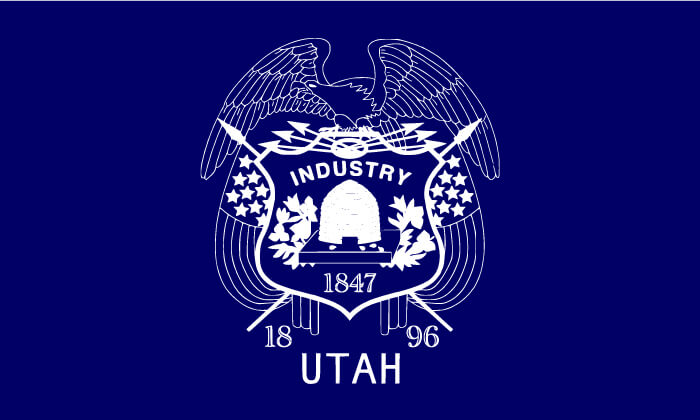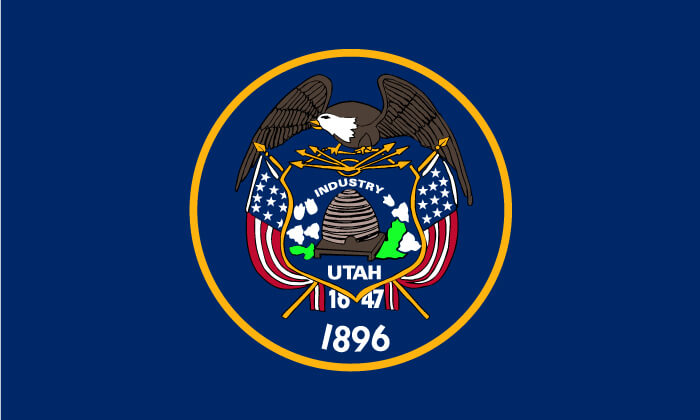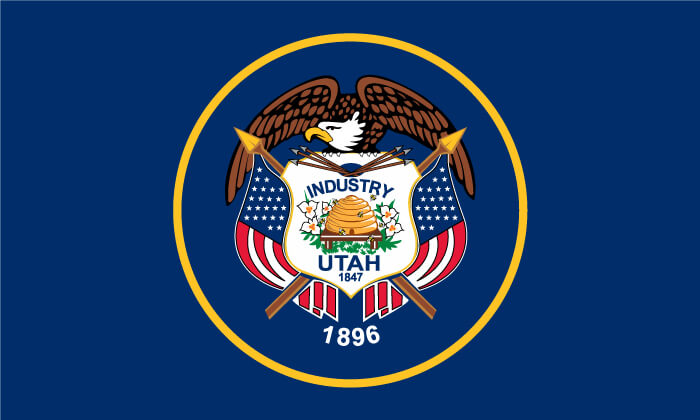Composition
The Utah flag features two irregular, horizontal lines creating three segments of blue, white, and red. The higher horizontal line forms five peaks.
At the center, a blue hexagon contains a smaller hexagon outlined in gold. Inside the hexagon is a gold beehive consisting of five hive sections. Below is a five-pointed white star.





